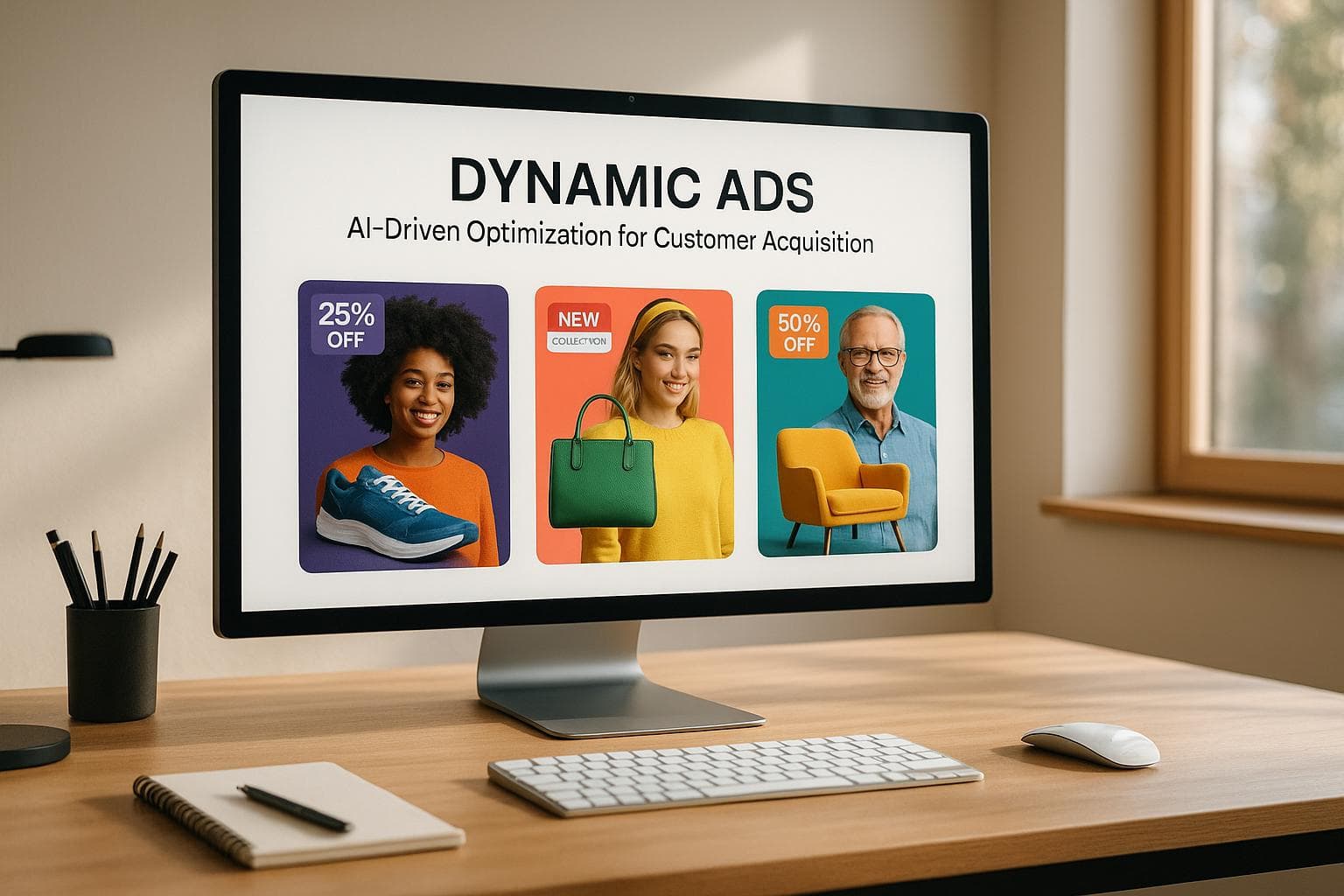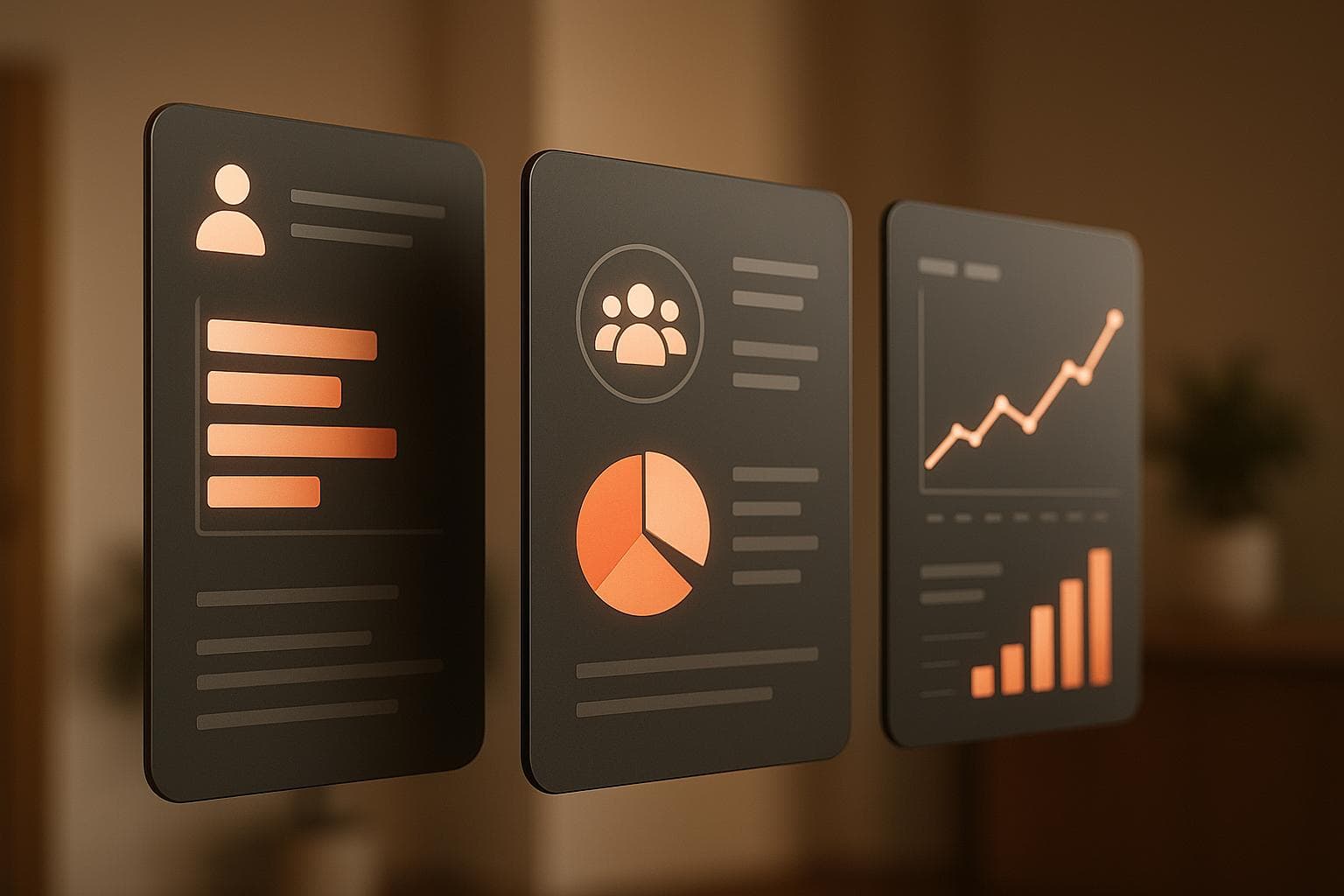Ultimate Guide to Nonprofit Partnerships in Ads
Explore effective strategies for nonprofit advertising partnerships that drive social impact while enhancing brand trust and engagement.
Nonprofit advertising partnerships combine businesses and charities to create campaigns that achieve commercial goals while supporting important causes. These collaborations are increasingly popular as 66% of U.S. consumers prefer products from purpose-driven companies, and 73% are likely to stop supporting brands that ignore social issues. Successful partnerships boost trust, expand audiences, and deliver measurable results.
Key insights:
- Align your nonprofit partner's mission with your brand values for authenticity.
- Use storytelling and real-life outcomes to connect emotionally with audiences.
- Integrate campaigns across digital and traditional platforms for maximum reach.
- Leverage free tools like Google Ad Grants for nonprofits to optimize budgets.
- Track metrics like CPA, ROAS, and CTR to measure success and refine strategies.
AI tools, such as Feedcast.ai, simplify ad management, optimize campaigns, and provide unified analytics, saving time and improving efficiency. Transparent reporting and consistent communication ensure long-term success and trust between partners. Nonprofit partnerships are a win-win for businesses and charities, creating social impact while driving business growth.
Nonprofit Cause Marketing: How to Partner With Companies
Strategies for Building Successful Nonprofit Ad Campaigns
Creating impactful nonprofit ad campaigns involves balancing the organization’s mission with practical goals. The most effective campaigns rely on engaging storytelling, clear messaging, and efficient use of resources to reach a wide audience and deliver meaningful results.
Creating Mission-Driven Messaging and Storytelling
To connect with audiences, focus on content that reflects the nonprofit’s core mission. Use real stories and measurable outcomes to illustrate the impact of donations. For instance, instead of broad statements about supporting education, a campaign could feature video testimonials from scholarship recipients, detailing their achievements and future goals. This approach not only tugs at the heartstrings but also showcases real-world results.
Transparency is key. Explain how partnerships work, where donations go, and what outcomes are expected. This openness builds trust and ensures the campaign doesn’t come across as overly promotional or insincere.
Collaboration between the nonprofit and its business partner is essential. Sharing brand guidelines, success stories, and visual materials ensures that co-branded content feels unified and genuine. By aligning the campaign’s tone with the business’s brand while staying true to the nonprofit’s mission, both parties can create a message that resonates. Open communication from the start is crucial to achieving this balance.
Finally, delivering this messaging consistently across various channels helps amplify its impact.
Using Cross-Channel Integration
Coordinating messaging across different platforms can significantly expand a campaign’s reach. Rather than relying on standalone ads, successful campaigns maintain consistent visuals, hashtags, and calls-to-action across social media, email, search ads, and even traditional media outlets.
For example, a campaign might kick off with co-branded social media posts, followed by targeted email newsletters, and then retargeting ads aimed at website visitors who’ve shown interest. This multi-layered strategy ensures the message reaches the audience at various touchpoints, increasing the likelihood of engagement.
Managing these efforts can be streamlined with tools like Feedcast.ai, which offers a unified dashboard for tracking performance and reallocating resources in real time. This ensures that campaigns remain adaptable and effective.
Using Free and Low-Cost Advertising Opportunities
Nonprofits in the United States can take advantage of free advertising options like Google Ad Grants, which provide up to $10,000 per month in search advertising credit[2]. Community radio stations also offer free public service announcements (PSAs), which, while unable to directly solicit donations, can direct listeners to websites for more information and support.
Businesses can amplify these efforts by contributing their own advertising resources. This might include featuring the nonprofit in social media campaigns, email newsletters, or retargeting ads that highlight the partnership. Donating ad space or creative services can further enhance the campaign’s reach.
Free tools and platforms can also play a significant role. For instance, e-commerce businesses can use AI-powered tools like Feedcast.ai’s Starter plan, which offers features such as unlimited product listings, product validation, and AI credits at no cost. These tools help optimize campaigns without adding strain to the budget.
Steps to Create and Manage Nonprofit Partnerships
Creating and managing nonprofit partnerships goes beyond a simple donation. It requires careful planning and collaboration to ensure mutual benefits and measurable results. Here's how to build partnerships that make a lasting impact.
Finding the Right Nonprofit Partner
The cornerstone of a successful partnership is mission alignment. Your nonprofit partner's values should naturally complement your brand's identity and resonate with your audience. For instance, a sustainable fashion brand teaming up with an environmental nonprofit focused on reducing textile waste forms a genuine connection that appeals to eco-conscious consumers[1][6].
Start by researching potential partners. Look for organizations with a proven track record, transparency, and compliance. Resources like GuideStar or Charity Navigator can help verify nonprofit status and credibility.
Another key factor is audience overlap. A tech company, for example, might align well with nonprofits promoting digital literacy or STEM education in underserved communities.
Also, assess the nonprofit's communication style and capacity. Smaller organizations may offer a more personal and flexible experience, while larger nonprofits often bring broader reach and established marketing resources. Make sure they have the bandwidth to actively participate in campaigns and maintain consistent communication.
Once you've identified the right partner, the next step is to set clear and measurable goals for your collaboration.
Setting Clear Campaign Goals and Metrics
Work together to establish SMART goals that are specific, measurable, and actionable. For example, aim for a 20% increase in donations or recruit 500 new volunteers. These goals provide a clear direction and allow both sides to track progress effectively.
Agree on shared KPIs that align with your campaign objectives. Metrics like impressions, click-through rates, conversions, and donation totals can help gauge success. For businesses, success might mean improved brand reputation or customer loyalty, while nonprofits might focus on hitting fundraising goals or growing their volunteer base.
Create a detailed budget that covers all campaign aspects - like ad spend, creative production, platform fees, and shared costs. Allocate resources based on each partner's strengths. For example, the business might handle media buys, while the nonprofit contributes impactful storytelling and data on results[4].
Regular check-ins, such as weekly or bi-weekly meetings, allow both sides to adjust strategies if needed and stay aligned during the campaign[4].
Maintaining Long-Term Collaboration
Sustained partnerships provide more value over time. Regular engagement - through annual renewals, joint planning sessions, and celebrating milestones - helps deepen the relationship.
Transparent reporting is essential for building trust. Share detailed impact reports with stakeholders and publicly recognize your partner's contributions. For example, when Girls Inc. partnered with Saks OFF 5th on a co-branded t-shirt campaign, they used social media and influencer marketing to amplify their message. Donating 100% of the proceeds to Girls Inc. not only raised funds but also boosted visibility and engagement for both organizations[2].
Flexibility is another critical factor. Be open to refreshing campaign themes and messaging to reflect changing market conditions or organizational priorities. Adjusting to new goals or opportunities ensures the partnership stays relevant and effective[4].
Employee involvement can further strengthen the partnership. Encourage staff to volunteer or participate in cause-related events. This not only builds a stronger connection to the nonprofit's mission but also fosters authentic storytelling and boosts employee morale.
To keep communication seamless, use shared project management tools and assign clear points of contact from both sides. Even during quieter periods between major campaigns, regular communication helps maintain momentum[4].
For businesses managing campaigns across multiple channels, tools like Feedcast.ai can simplify the process. Its unified dashboard allows both partners to track real-time metrics and optimize campaigns collaboratively. This data-driven approach ensures resources are used efficiently and campaigns deliver meaningful results. By adopting these practices, you’ll not only achieve campaign success but also reinforce your commitment to making a positive impact.
sbb-itb-0bd1697
Using AI to Streamline Nonprofit Advertising Campaigns
Running advertising campaigns across multiple platforms can be a juggling act. From managing different messaging styles to targeting diverse audiences and tracking performance metrics, it’s no small feat. That’s where AI steps in, offering tools to simplify these tasks and provide a clear, unified view of your campaign activities.
AI-Powered Ad Creation and Optimization
AI tools can take the guesswork out of creating effective ads by analyzing your campaign goals, audience data, and platform specifics. They generate ad copy that not only reflects your brand’s values but also aligns seamlessly with your nonprofit partner’s mission.
Take Feedcast.ai, for example. This platform uses AI to craft personalized ad copy tailored to each channel. It ensures your messaging stays consistent with your brand while also highlighting the nonprofit’s mission. By weaving in key brand messages and compelling impact stories, it creates content that resonates and drives engagement. But it doesn’t stop at ad creation - AI tools can adjust targeting and bidding strategies in real time based on performance data, ensuring your campaigns reach the right audience for the best results.
For campaigns involving donation-linked merchandise or cause-driven products, AI can refine the messaging to emphasize the cause, potentially boosting both engagement and overall campaign performance.
Centralized Ad Management and Analytics
Managing multiple advertising platforms - whether it’s Google, Meta, or Microsoft Ads - can feel like piecing together a puzzle. Each platform comes with its own dashboard and metrics, making it tough to get a comprehensive view of your campaign’s performance. Feedcast.ai addresses this challenge by offering a unified dashboard that connects and manages all your ad accounts in one place.
This centralized approach provides real-time performance analytics and simplifies reporting, so you can make quick adjustments without hopping between platforms. Metrics like impressions, clicks, conversions, and donation rates are all tracked in one location, creating transparency and fostering collaboration between you and your nonprofit partners. With these insights, you can optimize campaigns more effectively and demonstrate their impact with ease.
Scaling Campaigns with Automation
As your nonprofit partnerships grow or you work with multiple organizations at once, managing campaigns manually can become overwhelming. Automation offers a way to scale your efforts without sacrificing efficiency.
Features like smart targeting and performance-based adjustments take the repetitive tasks off your plate, giving your marketing team more time to focus on strategy, storytelling, and building stronger relationships with partners.
Industry reports show that AI-powered marketing tools can boost campaign ROI by up to 30% through better targeting and optimization. Nonprofits using automated ad management platforms have also reported saving 20–40% of the time they’d typically spend on manual campaign management[2]. With Feedcast.ai’s tiered plans - ranging from entry-level access to premium subscriptions - organizations of all sizes can start small and expand their automation capabilities as their partnerships grow. This flexibility makes it easier to streamline nonprofit advertising efforts and scale up when the time is right.
Measuring and Communicating the Impact of Nonprofit Partnerships
The success of nonprofit partnerships depends on delivering measurable results that showcase real-world impact. By focusing on the right metrics and effectively sharing your achievements, you can build trust with stakeholders and set the stage for future collaborations.
Tracking Campaign Performance Metrics
When it comes to evaluating campaign performance, three key metrics stand out: Cost Per Acquisition (CPA), Return on Ad Spend (ROAS), and Click-Through Rate (CTR).
- CPA tracks the cost of achieving a specific action, like securing a donation or a volunteer sign-up.
- ROAS measures the revenue generated for every dollar spent on advertising.
- CTR reveals how engaging your ad content is by showing the percentage of viewers who click on it[2][3].
Setting SMART objectives - Specific, Measurable, Attainable, Relevant, and Time-based - helps ensure your goals are clear and actionable. For example, instead of broadly aiming to "increase donations", you could aim to "boost online donations by 25% within three months using targeted social media campaigns."
Tools like Feedcast.ai simplify tracking by consolidating data from platforms like Google, Meta, and Microsoft Ads into a single dashboard. This centralized system allows for real-time tracking, customized reporting, and performance segmentation across various channels. With this approach, you can quickly identify which channels or ad creatives are delivering the best results.
Regularly monitoring metrics is essential. If your CTR dips or CPA rises, adjust your messaging or targeting promptly[3]. Such proactive tracking not only improves campaign performance but also provides insights for comparing different partnership models.
Comparing Partnership Models and Platforms
Here’s a quick look at how different partnership management approaches stack up:
| Model/Platform | Manual Management | Traditional Digital Tools | AI-Powered (e.g., Feedcast.ai) |
|---|---|---|---|
| Campaign Setup | Time-intensive | Moderate | Automated, fast |
| Data Integration | Siloed | Partial | Unified dashboard |
| Optimization | Manual | Basic | AI-driven, real-time |
| Reporting | Delayed, manual | Platform-specific | Automated, cross-channel |
| Scalability | Limited | Moderate | High, multi-channel |
| Primary Benefit | Low cost | Familiar tools | Better ROI, time savings |
AI-powered platforms streamline the entire process, from ad creation to targeting and analytics. This automation not only saves time but also enables faster adjustments and more efficient cross-platform management, helping organizations scale their campaigns with ease.
Research indicates that AI-driven marketing tools can improve campaign ROI by up to 30% through smarter targeting and optimization. Nonprofits using automated platforms report saving 20–40% of the time they’d typically spend on manual tasks[2]. Feedcast.ai, for instance, offers flexible pricing plans - from a free starter option to advanced subscriptions - allowing nonprofits to scale their efforts as their partnerships grow. These features underscore the value of integrating advanced tools to maximize social impact.
Promoting Social Responsibility to Consumers
Metrics are only part of the equation. To build trust with stakeholders, you need to communicate your results in a way that's both transparent and engaging. Share specific outcomes like the amount of funds raised, volunteer hours contributed, or tangible improvements in the community. Use a mix of formats - testimonials, infographics, and co-branded visuals - to make your impact visible across websites, social media, and press releases[7][4].
Storytelling plays a crucial role here. Highlight real stories of those who’ve benefited, showcase behind-the-scenes campaign efforts, and present measurable results. For example, blog posts, video testimonials, or social media campaigns that emphasize the nonprofit’s mission alongside your organization’s contributions can foster emotional connections and encourage participation[7][5].
Credibility is key. Use verifiable data, third-party validations, and clear explanations of your metrics. Avoid exaggeration and be honest about both successes and challenges. Establishing clear reporting standards through contracts or guidelines helps maintain consistency and trust[7][4].
To boost visibility, create custom graphics that feature both organizations’ logos, and follow SEO best practices when crafting campaign pages or blogs. Regular updates and compelling storytelling keep stakeholders engaged and help build long-term loyalty.
Finally, performance analytics offer valuable insights for refining future campaigns. By identifying which channels, messages, or creatives drive the most engagement or conversions, you can make data-driven adjustments. AI-powered analytics tools can even detect trends and recommend optimizations, ensuring continuous improvement and greater overall impact[3].
Key Takeaways for Nonprofit Advertising Partnerships
Creating strong nonprofit advertising partnerships means focusing on shared values rather than superficial gestures, with clear, measurable goals to guide the collaboration. It’s worth noting that 71% of consumers are more likely to buy from a brand that backs a cause they care about, making authenticity a crucial factor[1].
To build partnerships that last, start with formal agreements. These should clearly define roles, financial arrangements, and ongoing communication plans[7][4]. Without this foundation, even the best intentions can lead to misunderstandings.
But agreements alone aren’t enough. To truly resonate, campaigns need engaging storytelling. Highlighting the nonprofit’s mission through compelling narratives and crafting custom visuals - such as graphics that feature both organizations’ logos - helps create a deeper connection[7].
Setting SMART goals transforms vague ambitions into actionable targets. For example, instead of saying, “We want to increase awareness,” a more effective goal might be: “Boost e-newsletter subscriptions by 30% by the end of Q3”[3]. Specificity like this makes progress measurable and achievable.
AI tools like Feedcast.ai are changing the game for nonprofit advertising. These platforms simplify campaign tracking and generate tailored ad content for multiple channels, giving teams more time to focus on strategy[2]. By streamlining complex campaigns, they make collaboration more efficient and impactful.
For maximum reach, integrate campaigns across multiple channels. Use a mix of paid advertising and free resources like Google Ad Grants to expand visibility and engagement[2].
The benefits of nonprofit partnerships extend to businesses, too. Nearly 90% of companies report that these collaborations improve their brand image and boost customer loyalty[1]. To sustain these benefits, it’s essential to regularly monitor performance, refresh marketing messages annually, and actively promote partnerships. These practices ensure the relationship continues to deliver both social impact and business growth.
Lastly, transparent reporting builds trust. Use testimonials, infographics, and social media updates to share the partnership’s impact[7]. Clear, consistent communication not only strengthens credibility but also reinforces the mutual value of the collaboration, creating a foundation for long-term success.
FAQs
How can businesses create authentic nonprofit partnerships that resonate with their audience?
When forming partnerships with nonprofits, it’s essential to ensure they feel genuine rather than coming across as a marketing ploy. Start by aligning with causes that truly reflect your company’s core values and mission. The nonprofit you choose should connect meaningfully with both your brand’s purpose and the interests of your audience.
Be upfront about the partnership’s objectives and clearly communicate how it supports the nonprofit. Share impactful stories or examples to highlight the real difference being made. To deepen engagement, invite your audience to get involved - whether that’s through donations, volunteering, or spreading the word. Authenticity shines through when your commitment goes beyond surface-level promotion and shows genuine care for the cause.
How can I evaluate the success of a nonprofit advertising campaign?
Measuring how well a nonprofit advertising campaign performs means keeping an eye on specific key performance indicators (KPIs) tied to your campaign's goals. Some of the most common metrics include engagement rates (likes, shares, and comments), website traffic generated by the ads, and conversion rates, such as the number of donations or sign-ups.
It’s also important to track ad impressions and cost-per-click (CPC) to evaluate how efficiently your budget is being used. Tools like analytics dashboards or reports from advertising platforms can give you a clearer picture of audience behavior and how your campaign is performing overall. Use these insights to tweak your approach and get the most out of your efforts.
How can AI tools like Feedcast.ai help nonprofits improve their advertising campaigns?
AI tools such as Feedcast.ai are transforming how nonprofits manage their advertising campaigns by automating essential processes and boosting ad effectiveness. This platform uses AI to refine product data, making it more visible on prominent ad platforms like Google, Meta, and Microsoft.
With centralized tools for creating, optimizing, and tracking ads, Feedcast.ai simplifies campaign management, saving both time and resources. By utilizing advanced targeting and performance analytics, nonprofits can expand their reach, connect with the right audience, and achieve stronger results from their advertising efforts.
Geoffrey G.










